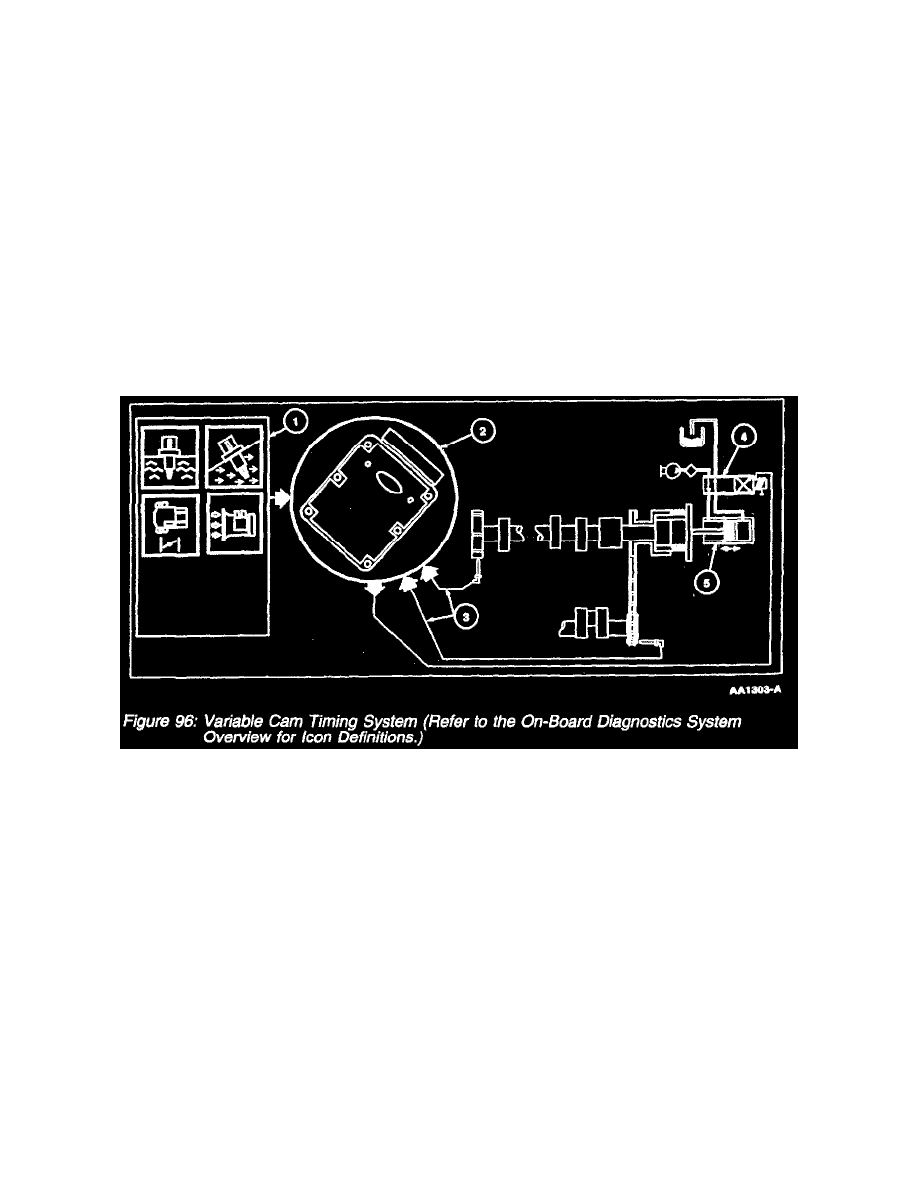F 350 4WD Super Duty V10-6.8L VIN V (2005)

Variable Valve Timing Actuator: Description and Operation
VARIABLE CAM TIMING (VCT) SYSTEM
Overview
The VCT enables rotation of the camshaft(s) relative to the crankshaft rotation as a function of engine operating conditions. There are 4 types of VCT
systems.
-
Exhaust Phase Shifting (EPS) system - the exhaust cam is the active cam being retarded.
-
Intake Phase Shifting (IPS) system - the intake cam is the active cam being advanced.
-
Dual Equal Phase Shifting (DEPS) system - both intake and exhaust cams are phase shifted and equally advanced or retarded.
-
Dual Independent Phase Shifting (DIPS) system - where both the intake and exhaust cams are shifted independently.
All systems have 4 operational modes: idle, part throttle, wide open throttle, and default mode. At idle and low engine speeds with closed throttle, the
PCM determines the phase angle based on air flow, engine oil temperature and engine coolant temperature. At part and wide open throttle the PCM
determines the phase angle based on engine RPM, load, and throttle position. VCT systems provide reduced emissions and enhanced engine power,
fuel economy and idle quality. IPS systems also have the added benefit of improved torque. In addition, some VCT system applications can eliminate
the need for an external exhaust gas recirculation (EGR) system. The elimination of the EGR system is accomplished by controlling the overlap time
between the intake valve opening and exhaust valve closing. Currently, both the IPS and DEPS systems are used.
Variable Cam Timing (VCT) System
Variable Cam Timing System
The VCT system consists of an electric hydraulic positioning control solenoid, a camshaft position (CMP) sensor, and a trigger wheel. The CMP
trigger wheel has a number of equally spaced teeth equal to the number (n) of cylinders on a bank plus one extra tooth (n+1). Four cylinder and V8
engines use a CMP 4+1 tooth trigger wheel. V6 engines use a CMP 3+1 tooth trigger wheel. The extra tooth placed between the equally spaced teeth
represents the CMP signal for that bank. A crankshaft position sensor (CKP) provides the PCM with crankshaft positioning information in 10 degree
increments.
1. The PCM receives input signals from the intake air temperature (IAT) sensor, engine coolant temperature (ECT) sensor, engine oil temperature
(EOT) sensor, CMP, throttle position (TP) sensor, mass air flow (MAF) sensor, and CKP to determine the operating conditions of the engine. At
idle and low engine speeds with closed throttle, the PCM controls the camshaft position based on ECT, EOT, IAT, and MAF. During part and
wide open throttle, the camshaft position is determined by engine RPM, load and throttle position. The VCT system will not operate until the
engine is at normal operating temperature.
2. The VCT system is enabled by the PCM when the proper conditions are met.
3. The CKP signal is used as a reference for CMP positioning.
4. The VCT solenoid valve is an integral part of the VCT system. The solenoid valve controls the flow of engine oil in the VCT actuator assembly.
As the PCM controls the duty cycle of the solenoid valve, oil pressure/flow advances or retards the cam timing. Duty cycles near 0% or 100%
represent rapid movement of the camshaft. Retaining a fixed camshaft position is accomplished by dithering (oscillating) the solenoid valve duty
cycle.
The PCM calculates and determines the desired camshaft position. It will continually update the VCT solenoid duty cycle until the desired position
is achieved. A difference between the desired and actual camshaft position represents a position error in the PCM VCT control loop. The PCM
